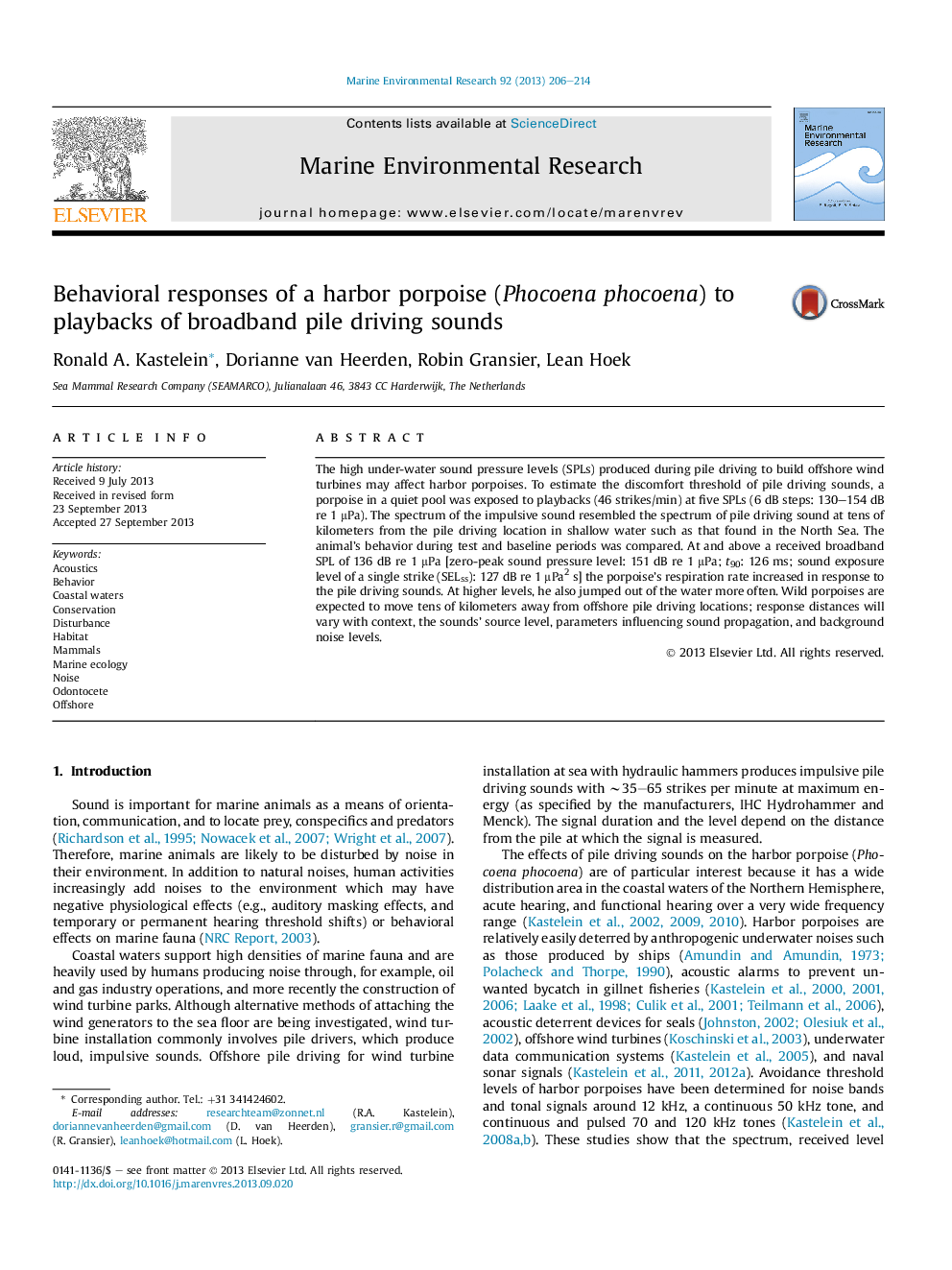| کد مقاله | کد نشریه | سال انتشار | مقاله انگلیسی | نسخه تمام متن |
|---|---|---|---|---|
| 6387885 | 1627590 | 2013 | 9 صفحه PDF | دانلود رایگان |

- A harbor porpoise was exposed to pile driving sounds (130-154 dB re 1 μPa).
- His respiration rate and number of jumps increased.
- Porpoises are expected to move away from sources of pile driving sounds.
- Response distances will vary with context, source levels, environmental parameters.
The high under-water sound pressure levels (SPLs) produced during pile driving to build offshore wind turbines may affect harbor porpoises. To estimate the discomfort threshold of pile driving sounds, a porpoise in a quiet pool was exposed to playbacks (46 strikes/min) at five SPLs (6 dB steps: 130-154 dB re 1 μPa). The spectrum of the impulsive sound resembled the spectrum of pile driving sound at tens of kilometers from the pile driving location in shallow water such as that found in the North Sea. The animal's behavior during test and baseline periods was compared. At and above a received broadband SPL of 136 dB re 1 μPa [zero-peak sound pressure level: 151 dB re 1 μPa; t90: 126 ms; sound exposure level of a single strike (SELss): 127 dB re 1 μPa2 s] the porpoise's respiration rate increased in response to the pile driving sounds. At higher levels, he also jumped out of the water more often. Wild porpoises are expected to move tens of kilometers away from offshore pile driving locations; response distances will vary with context, the sounds' source level, parameters influencing sound propagation, and background noise levels.
Journal: Marine Environmental Research - Volume 92, December 2013, Pages 206-214